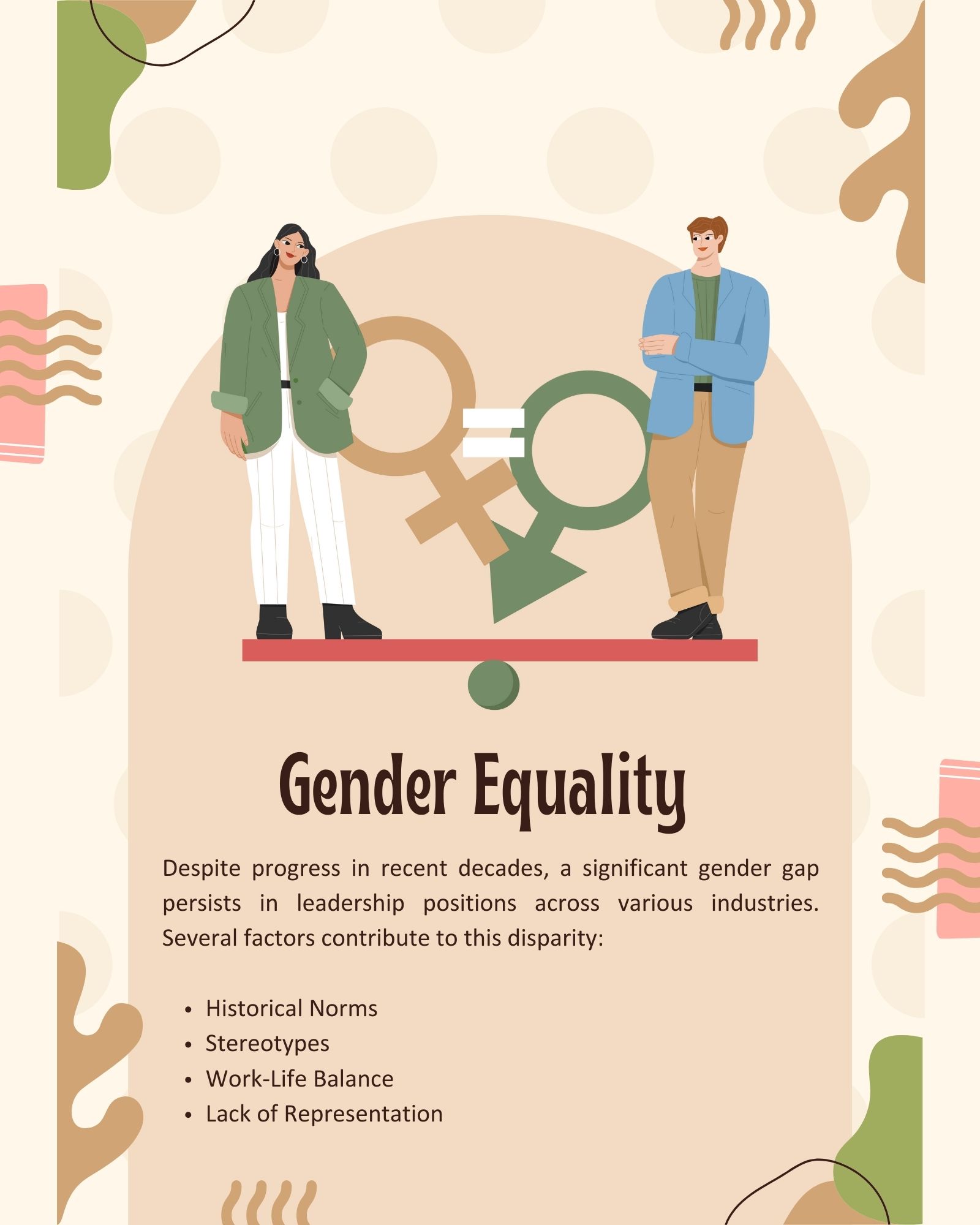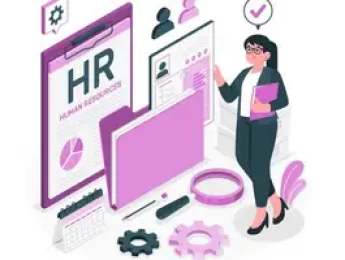- Table of Contents
- Introduction
- Defining Leadership in the Workplace
- 1. Vision Setting:
- 2. Motivation:
- 3. Empowerment:
- 4. Role Modelling:
- 5. Fostering Collaboration:
- The Evolution of Leadership
- 1. Embracing Technology:
- 2. Emotional Intelligence:
- 3. Diversity and Inclusion:
- 4. Agile Leadership:
- 5. Purpose-Driven Leadership:
- 6. Crisis Leadership:
- Benefits of Leadership Skills
- Increased Productivity
- Improved Employee Engagement
- Enhanced Team Collaboration
- Development of Future Leaders
- Strategies for Becoming a Great Leader
- 1. Leading by Example:
- 2. Communicating Effectively:
- 3. Fostering Collaboration and Teamwork:
- 4. Empowering and Delegating:
- 5. Providing Support and Mentorship:
- 6. Encouraging Innovation and Adaptability:
- 7. Recognising and Rewarding Achievements:
- 8. Continuously Learning and Improving:
- The Role of Gender in Leadership
- 1. The Gender Gap in Leadership
- 2. The Benefits of Gender Diversity in Leadership:
- 3. Promoting Gender Equality in Leadership:
- 4. The Role of Male Allies:
- 5. The Importance of Representation:
- 6. Measuring Progress:
- 7. Legal and Regulatory Framework:
- Conclusion
Introduction
Leadership is the cornerstone of success in any workplace, an art that transcends mere management and delves into the realm of inspiration and motivation. In this comprehensive exploration of leadership in the workplace, we will delve deeper into what constitutes effective leadership, its myriad benefits, and actionable strategies to become an exceptional leader. But that's not all; we'll also uncover fascinating aspects of leadership, including its evolving nature, emotional intelligence's role, and technology's influence on modern leadership. Buckle up as we embark on a journey to unleash the true potential of leadership.
Defining Leadership in the Workplace
Leadership in the workplace is more than just holding a position of authority; it's about steering a team toward common goals. This requires setting a compelling vision, motivating team members, and empowering them to reach their full potential. A workplace leader should be a beacon of inspiration, fostering collaboration, innovation, and growth. To understand the essence of leadership, let's break it down:
Component | Description |
Vision Setting | Defining a clear and inspiring future direction |
Motivation | Igniting the fire within team members |
Empowerment | Granting autonomy for personal growth |
Role Modelling | Exhibiting desirable behaviours |
Fostering Collaboration | Cultivating an environment of teamwork |
Table 1: Key Components of Workplace Leadership
1. Vision Setting:
At its core, leadership begins with having a clear and compelling vision. A workplace leader must envision a future state for the organisation or team that inspires and motivates others to join the journey. This vision serves as the North Star, guiding all actions and decisions. It should be communicated effectively to create a shared understanding and purpose among team members.
Leaders who excel in vision setting can articulate what needs to be achieved and why it matters. They create a sense of purpose that goes beyond the day-to-day tasks, allowing team members to see the bigger picture and feel a strong connection to the organisation's mission.
2. Motivation:
Leadership is also about instilling motivation in team members. This involves understanding what drives each individual and tailoring your approach to tap into their intrinsic motivations. Motivated employees are more engaged, productive, and committed to the organisation's success.
Motivation can take many forms, from recognition and rewards to providing opportunities for growth and advancement. Great leaders inspire by showing genuine interest in their team members' personal and professional development, helping them connect their work to their aspirations.
3. Empowerment:
Empowering team members is a hallmark of effective leadership. This means giving individuals the autonomy and authority to make decisions and take ownership of their work. When people feel trusted and empowered, they're more likely to innovate, take calculated risks, and contribute their best efforts.
Leaders who excel in empowerment delegate tasks and provide the necessary support, resources, and guidance. They create an environment where individuals feel confident in their abilities, knowing that they have the backing of their leader and the freedom to explore new ideas.
4. Role Modelling:
Leaders set an example for their team. They embody the organisation's values and desired behaviours. Leading by example means consistently demonstrating integrity, accountability, and professionalism in every aspect of their work.
When leaders are role models, they establish a standard of conduct that team members aspire to emulate. This builds trust and credibility, as employees see that their leader practises what they preach. It also helps create a culture of accountability, where everyone takes responsibility for their actions and decisions.
5. Fostering Collaboration:
Effective leadership thrives on collaboration and teamwork. Leaders create an atmosphere where team members feel comfortable sharing ideas, offering feedback, and working together towards common goals. This involves promoting open dialogue, active listening, and respect for diverse perspectives.
Leaders who foster collaboration recognise that innovation often emerges from the synergy of different ideas and experiences. They encourage brainstorming sessions, cross-functional projects, and knowledge exchange among team members. This collaborative spirit strengthens the team and drives creative solutions to challenges.
The Evolution of Leadership
Leadership is not a static concept; it continually adapts to changing workplace dynamics, technological advancements, and societal shifts. In this section, we'll explore the evolution of leadership in the modern context, shedding light on how leaders navigate a rapidly changing landscape.
1. Embracing Technology:
Technology has become an integral part of the workplace in today's digital age. Leaders must harness its power to drive efficiency, communication, and innovation:
Digital Leadership Skills: Modern leaders need digital literacy skills to navigate digital platforms and tools effectively. This includes understanding data analytics, project management software, and virtual communication tools.
Remote Leadership: The rise of remote work has necessitated a shift in leadership styles. Leaders must excel in managing remote teams, ensuring that employees stay engaged, connected, and productive from various locations.
Data-Driven Decision-Making: Data is a valuable resource in decision-making. Leaders who can collect, analyse, and leverage data for insights gain a competitive edge. They use data to make informed decisions that drive business outcomes.
Cybersecurity Awareness: Leaders must be aware of cybersecurity threats and promote a culture of security within their organisations. Cybersecurity breaches can have severe consequences, making it essential for leaders to prioritise data protection.
2. Emotional Intelligence:
Understanding and managing emotions, both in oneself and others, has gained prominence in leadership. Emotional intelligence (EQ) plays a pivotal role in effective leadership:
Empathy: Leaders with high EQ are empathetic and attuned to their team members' emotions. They can provide support and understanding during challenging times.
Conflict Resolution: EQ enables leaders to navigate conflicts constructively. They can address disputes with empathy and diplomacy, maintaining team cohesion.
Stress Management: Leadership often comes with high-pressure situations. Leaders with strong EQ can manage their stress levels effectively and help their teams do the same.
Building Relationships: EQ fosters strong interpersonal relationships. Leaders who connect with their team on an emotional level build trust and loyalty.
3. Diversity and Inclusion:
The importance of diversity and inclusion in leadership cannot be overstated. Organisations are recognising the value of diverse perspectives and are striving for more inclusive leadership:
Inclusive Leadership: Inclusive leaders create an environment where all voices are heard, regardless of background or identity. They promote a sense of belonging and ensure everyone can contribute equally.
Cultural Competence: Leaders must be culturally competent and understand the nuances of working with a diverse workforce. Cultural sensitivity fosters collaboration and minimises misunderstandings.
Gender Diversity: Gender disparities in leadership positions have long been a concern. Organisations are actively working to promote gender diversity in leadership roles, realising that diverse leadership teams lead to better decision-making and innovation.
Ethical Leadership: Ethical considerations are paramount in today's leadership landscape. Leaders are expected to demonstrate high ethical standards, and organisations increasingly prioritise ethical leadership in their selection and development processes.
4. Agile Leadership:
The rapid pace of change in the business world demands agile leadership. Agile leaders can adapt quickly to new circumstances and respond effectively to emerging challenges:
Adaptability: Agile leaders are flexible and open to change. They can pivot when necessary and guide their teams through transitions.
Innovation and Risk-Taking: Leaders who embrace agility encourage their teams to innovate and take calculated risks. They create a culture where experimentation and learning from failure are valued.
Decentralised Decision-Making: Agile leadership often involves decentralised decision-making. Leaders empower their teams to make decisions autonomously, enabling faster responses to opportunities and threats.
Collaboration Across Functions: Agile leaders promote collaboration across different functions and departments. They break down silos and encourage cross-functional teams to work together on projects.
5. Purpose-Driven Leadership:
In recent years, leadership with a strong sense of purpose has gained prominence. Purpose-driven leaders focus on values and the broader impact of their organisations:
Social Responsibility: Purpose-driven leaders prioritise corporate social responsibility (CSR) and sustainability. They consider the social and environmental impact of their decisions.
Stakeholder Engagement: These leaders engage with various stakeholders, including customers, employees, communities, and investors. They seek to balance the interests of various groups.
Long-Term Vision: Purpose-driven leaders have a long-term vision that extends beyond immediate profits. They consider the legacy their organisation will leave for future generations.
Employee Well-being: These leaders prioritise the well-being and fulfilment of their employees, recognising that a satisfied workforce is more likely to contribute to the organisation's purpose.
6. Crisis Leadership:
The ability to lead effectively in times of crisis is a unique and critical skill set. Whether facing a global pandemic, economic downturn, or other unforeseen challenges, leaders who can remain calm and make tough decisions inspire team confidence. After the COVID-19 pandemic in 2020, 47% of corporate leaders are strategising to address a range of scenarios as organisations navigate the evolving landscape. Of these, 17% will direct their attention towards improbable yet high-impact occurrences, while the remaining 32% will focus on conceivable additional events, according to Finances Online.
Crisis Communication: Leaders must excel in clear and empathetic communication during crises. They keep their teams informed, address concerns, and provide guidance.
Adaptive Decision-Making: Crisis leadership involves making quick, adaptive decisions. Leaders must evaluate evolving situations and adjust strategies accordingly.
Resilience: Leaders demonstrate resilience in the face of adversity. They maintain a positive attitude and provide support to their teams, helping them navigate challenging times.
Scenario Planning: Effective crisis leaders engage in scenario planning to anticipate potential challenges and develop strategies for various scenarios. This proactive approach minimises the impact of crises.
Benefits of Leadership Skills
Leadership skills are like the engine that powers the vehicle of a successful workplace. They bring about a multitude of benefits that ripple through an organisation, impacting everything from productivity to employee morale. In this section, we'll explore these benefits in greater detail to underscore the immense value of cultivating leadership skills in the workplace.
Increased Productivity
Leaders inspire and motivate, which invariably leads to increased productivity. Their ability to set expectations and provide guidance creates an environment that fosters efficiency and performance.
Improved Employee Engagement
Effective leaders establish strong connections with team members, instilling a sense of belonging and purpose. This heightened engagement results in higher job satisfaction and lower turnover rates.
Benefits of Leadership Skills |
Increased Productivity |
Improved Employee Engagement |
Enhanced Team Collaboration |
Development of Future Leaders |
Higher Innovation and Adaptability |
Recognition and Motivation |
Table 2: Benefits of leadership skills
Enhanced Team Collaboration
Leadership skills encourage effective communication and collaboration within teams. Leaders promote open dialogue, active listening, and respect for diverse perspectives, strengthening teamwork and stimulating innovative solutions.
Development of Future Leaders
Strong workplace leaders invest in the growth of their team members, providing mentorship and opportunities for advancement. This investment creates a pipeline of skilled individuals ready to assume leadership roles in the future.
Strategies for Becoming a Great Leader
Becoming a great leader is a journey of continuous self-improvement and a commitment to developing others. It involves a combination of self-awareness, interpersonal skills, and a deep understanding of how to navigate the complexities of the workplace. Let's explore these strategies in greater detail, providing actionable insights on how to become an exceptional leader:
1. Leading by Example:
Leading by example is not just a catchphrase; it's the foundation of effective leadership. Great leaders embody the behaviours and qualities they expect from their team members:
Integrity: Leaders adhere to the highest ethical standards in their actions and decisions. They are transparent and honest, earning the trust and respect of their team.
Accountability: Leaders take responsibility for their actions and admit when they make mistakes. This sets a precedent for accountability throughout the organisation.
Professionalism: Leaders maintain a high level of professionalism in their interactions and work habits. They are punctual, reliable, and consistently demonstrate a strong work ethic.
Consistency: Leaders adopt a consistent approach to their work and interactions, which creates stability and predictability for the team.
2. Communicating Effectively:
Effective communication is the linchpin of successful leadership. Clear and open communication is key to ensuring that the team understands expectations, receives constructive feedback, and feels heard:
Expectation Setting: Leaders communicate expectations clearly, leaving no room for ambiguity. Team members should have a comprehensive understanding of their roles and responsibilities.
Feedback: Leaders provide regular feedback, both positive and constructive. They use specific examples and offer guidance for improvement, helping team members grow.
Active Listening: Great leaders are active listeners. They pay full attention to what others are saying, ask clarifying questions, and demonstrate empathy.
Transparency: Leaders are transparent about organisational decisions and changes. Transparency builds trust and reduces uncertainty.
3. Fostering Collaboration and Teamwork:
A significant part of leadership involves creating an environment where collaboration and teamwork flourish:
Opportunities for Brainstorming: Leaders encourage team members to share ideas freely. They create a safe space where innovative solutions can emerge from collective brainstorming sessions.
Cross-functional Projects: Assigning cross-functional projects allows team members to work outside their usual silos. This promotes a holistic understanding of the organisation and fosters collaboration.
Recognition: Leaders recognise and celebrate each team member's contributions. Acknowledging individual efforts and successes reinforces the value of teamwork.
Promoting Collective Accomplishment: Great leaders emphasise that success is a collective accomplishment. They communicate that everyone's contributions are integral to achieving the organisation's goals.
4. Empowering and Delegating:
Empowering team members through delegation is a hallmark of effective leadership:
Delegation: Leaders delegate tasks and responsibilities based on team members' strengths and skills. Delegation fosters autonomy, encourages growth, and demonstrates trust in the team's abilities.
Providing Resources: Leaders ensure team members have the necessary resources, tools, and information to excel in their roles. They remove obstacles that hinder productivity.
Encouraging Initiative: Leaders encourage team members to take initiative and be proactive. They value and reward proactive problem-solving.
Balancing Oversight: Effective leaders balance providing guidance and allowing room for autonomy. They are available for support but avoid micromanagement.
5. Providing Support and Mentorship:
Great leaders understand the importance of nurturing their team members' personal and professional growth:
Mentorship: Leaders act as mentors, providing guidance, advice, and career development opportunities. Mentorship helps individuals develop their skills and advance in their careers.
Training and Development: Leaders invest in training and development programmes to enhance their team's skills. They encourage continuous learning and provide access to relevant resources.
Recognising Potential: Leaders are skilled at identifying and nurturing team members' potential. They provide opportunities that challenge individuals and help them reach their full potential.
Lending a Listening Ear: Leaders are approachable and open to listening to their team members' concerns and aspirations. They create an environment where employees feel comfortable discussing their career goals.
6. Encouraging Innovation and Adaptability:
Innovation and adaptability are crucial in today's rapidly evolving business landscape:
Creative Thinking: Leaders encourage creative thinking and brainstorming sessions. They create a culture where innovative ideas are welcomed and rewarded.
Risk-Taking: Leaders understand that calculated risks can lead to breakthroughs. They support calculated risk-taking and provide a safety net for experimentation.
Embracing Change: Effective leaders embrace change and help their team members adapt to new technologies, industry trends, and evolving workplace dynamics.
Continuous Improvement: Leaders promote a culture of continuous improvement. They seek feedback from their team and peers and actively look for ways to enhance processes and strategies.
7. Recognising and Rewarding Achievements:
Acknowledging and appreciating the accomplishments of team members is essential for maintaining morale and motivation:
Public Recognition: Leaders publicly recognise and celebrate individual and team achievements. Public recognition boosts morale and motivates team members.
Constructive Feedback: In addition to praise, leaders provide constructive feedback. They offer specific insights and recommendations for improvement.
Incentives and Rewards: Leaders may implement incentive programmes or rewards to recognise outstanding performance. These incentives can range from bonuses to extra time off.
Career Advancement: Leaders consider career advancement opportunities for high-performing team members, fostering a sense of long-term commitment and growth within the organisation.
8. Continuously Learning and Improving:
Leadership is a dynamic journey that requires continuous learning and self-improvement:
Staying Updated: Leaders stay updated with industry trends, market developments, and emerging technologies. They are well-informed about the challenges and opportunities in their field.
Feedback and Self-Reflection: Effective leaders seek feedback from their team and peers. They engage in self-reflection to identify areas for improvement.
Investing in Development: With only 20% of companies providing leadership development training across all organisational levels, according to ZipDo, investing in professional development has become more vital than ever. Leaders have to invest in their own development through workshops, courses, and training programmes. They also need to continuously enhance their leadership skills.
Mentorship and Coaching: Leaders may seek mentorship or coaching from experienced leaders to gain new perspectives and insights.

The Role of Gender in Leadership
The role of gender in leadership has received increasing attention and scrutiny in recent years. As society becomes more conscious of the importance of diversity and inclusivity, organisations strive to address gender disparities in leadership roles. In this section, we'll explore the complexities surrounding gender in leadership, the benefits of gender diversity, and the initiatives being taken to promote gender equality in the workplace.
1. The Gender Gap in Leadership
Despite progress in recent decades, a significant gender gap persists in leadership positions across various industries. Several factors contribute to this disparity:
Historical Norms: Historically, leadership roles were often associated with men, leading to deep-seated gender biases that still exist today.
Stereotypes: Stereotypes about leadership qualities can disadvantage women. Traits such as assertiveness and decisiveness have been traditionally associated with male leaders.
Work-Life Balance: The challenge of balancing career aspirations with family responsibilities can affect women's career progression. This often leads to the "glass ceiling" phenomenon.
Lack of Representation: A lack of female role models in leadership positions can discourage women from pursuing leadership roles.
2. The Benefits of Gender Diversity in Leadership:
Gender diversity in leadership brings numerous advantages to organisations, including:
Broader Perspectives: Diverse leadership teams bring a wider range of perspectives to decision-making. This diversity of thought leads to more creative problem-solving and innovation.
Improved Performance: Research has shown that companies with more women in leadership positions tend to perform better financially.
Better Decision-Making: Diverse teams are more likely to make well-rounded, balanced decisions that consider a variety of viewpoints.
Enhanced Employee Engagement: Gender-diverse leadership teams can create a more inclusive and equitable workplace culture, leading to higher levels of employee engagement and retention.
Market Understanding: A diverse leadership team is better equipped to understand and cater to the diverse customer base in today's globalised markets.
3. Promoting Gender Equality in Leadership:
Organisations and societies are taking various initiatives to promote gender equality in leadership roles:
Mentorship and Sponsorship Programmes: These programmes pair women with experienced leaders who can provide guidance, support, and advocacy for their career advancement.
Leadership Development Programmes: Organisations invest in leadership development programmes that target high-potential women and provide them with the skills and opportunities needed to advance.
Flexible Work Arrangements: Offering flexible work arrangements, such as remote work options and flexible hours, can help women balance their careers with family responsibilities.
Equal Pay Policies: Ensuring that men and women receive equal pay for equal work is a fundamental step in addressing gender disparities.
Diversity and Inclusion Initiatives: Organisations are implementing diversity and inclusion strategies to create a more inclusive workplace culture. This includes policies to combat bias and discrimination.
Transparency: Many organisations are becoming more transparent about their diversity metrics and gender pay gap, holding themselves accountable for progress.
Parental Leave Policies: Generous parental leave policies benefit both men and women, enabling them to take time off for family responsibilities without compromising their careers.
Leadership Training: Leadership training programmes are being tailored to address gender biases and equip leaders with the skills to create inclusive teams.
4. The Role of Male Allies:
Gender equality is not solely a women's issue; it requires the active support of male allies in leadership roles. Men can play a crucial role in promoting gender equality by:
Advocating for Women: Male leaders can use their positions of influence to advocate for the inclusion and advancement of women in leadership.
Championing Gender Diversity: Male allies can actively champion gender diversity initiatives within their organisations, helping to shift the culture towards greater inclusivity.
Mentoring and Sponsoring Women: Men can mentor and sponsor women in their organisations, helping them navigate the path to leadership positions.
Being Inclusive Leaders: Male leaders can lead by example by fostering inclusive team cultures that value diverse perspectives.
5. The Importance of Representation:
Representation matters. Having women in visible leadership roles sends a powerful message to aspiring female leaders. It demonstrates that leadership is not limited by gender and provides role models for the next generation of women.
6. Measuring Progress:
Organisations must track and measure their progress in achieving gender diversity in leadership roles. This includes regularly reviewing metrics related to gender representation, pay equity, and employee satisfaction. It also involves soliciting employee feedback to gauge the effectiveness of diversity and inclusion initiatives.
7. Legal and Regulatory Framework:
Many countries have implemented legal and regulatory frameworks to address gender disparities in leadership. These may include requirements for gender diversity on boards of directors or legislation to ensure equal pay for equal work.
Conclusion
Leadership in the workplace is a dynamic force that drives success and empowers others to reach their full potential. By embodying the qualities of a great leader and implementing effective leadership strategies, individuals can foster a positive work environment, increase productivity, and cultivate a culture of innovation and growth. Remember, leadership transcends titles; it's about empowering others and leaving a lasting impact on people and organisations. If you're ready to enhance your leadership journey, then you need to check out our course, ‘Perfecting Your Management and Leadership Skills.’ This course will provide you with invaluable insights, practical strategies, and the knowledge needed to excel as a leader in today's ever-evolving workplace. Join us on this transformative journey and unlock your full leadership potential today!



























